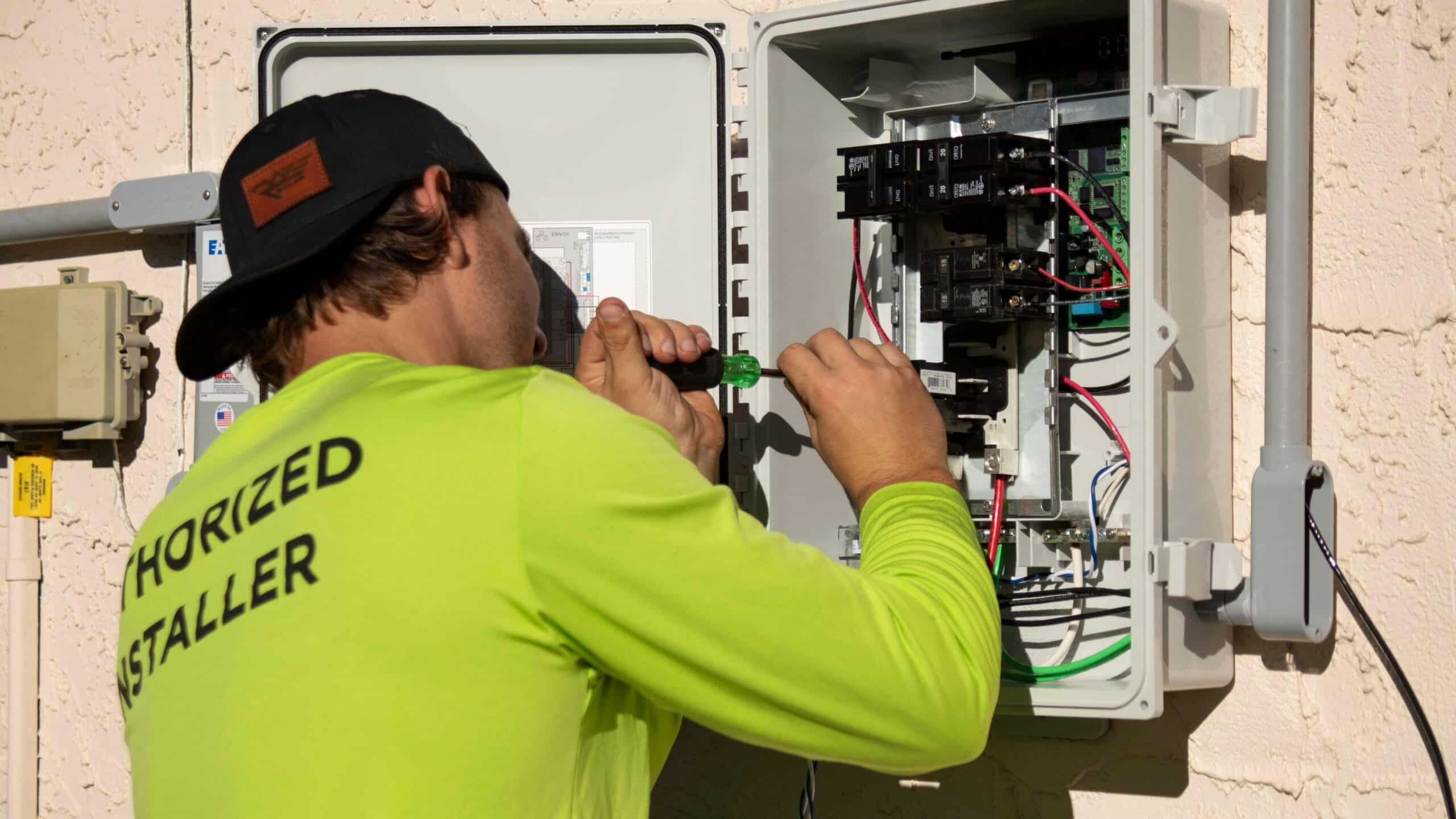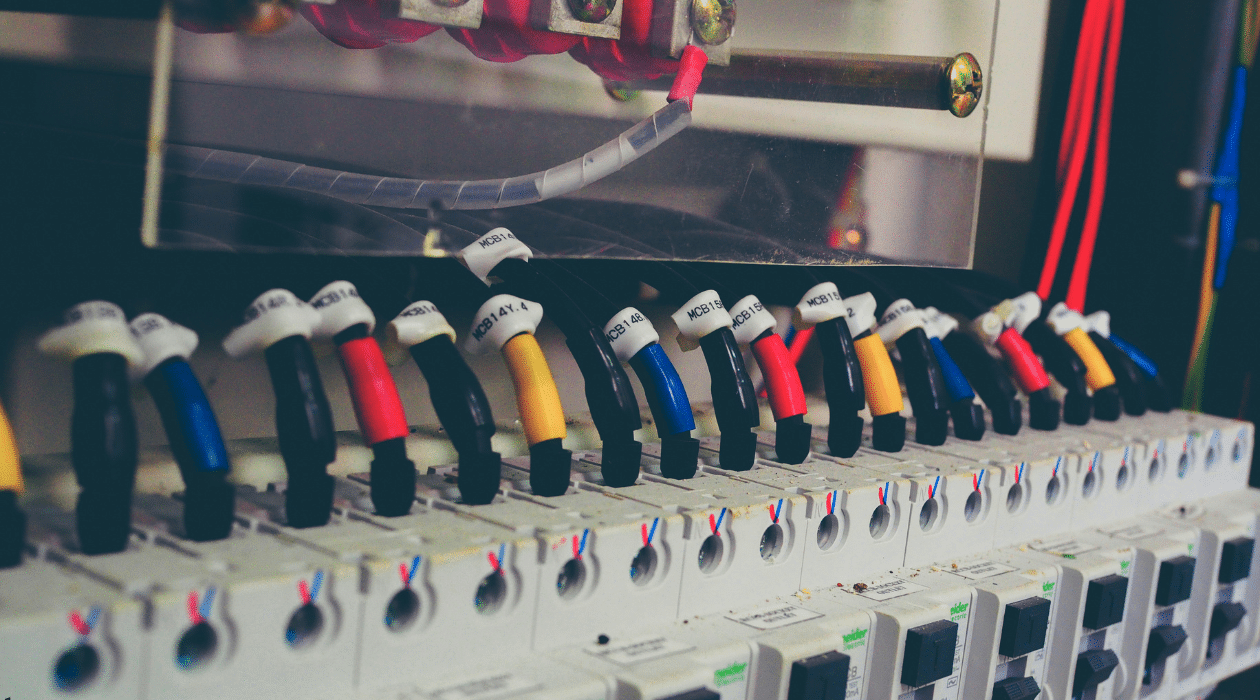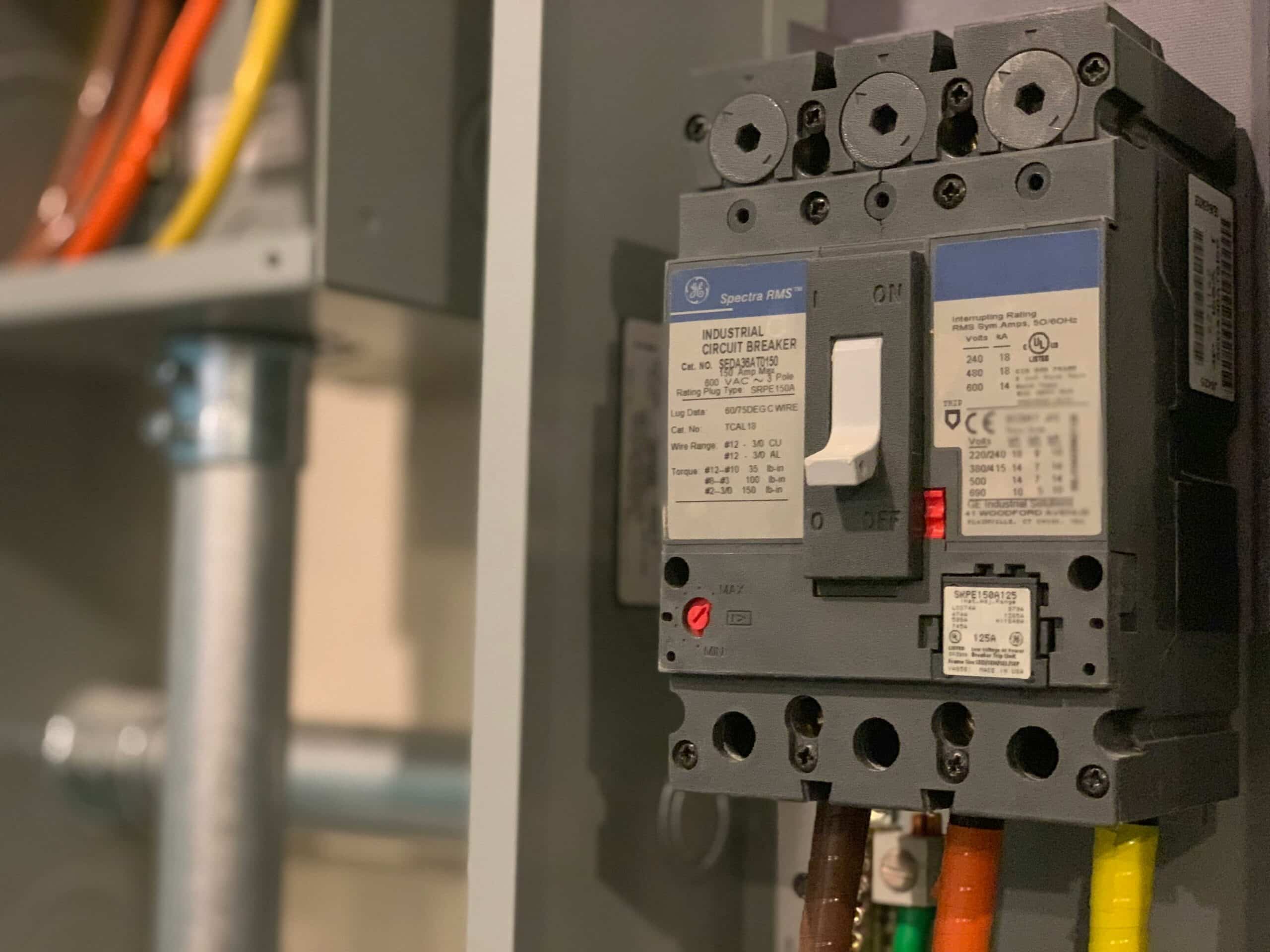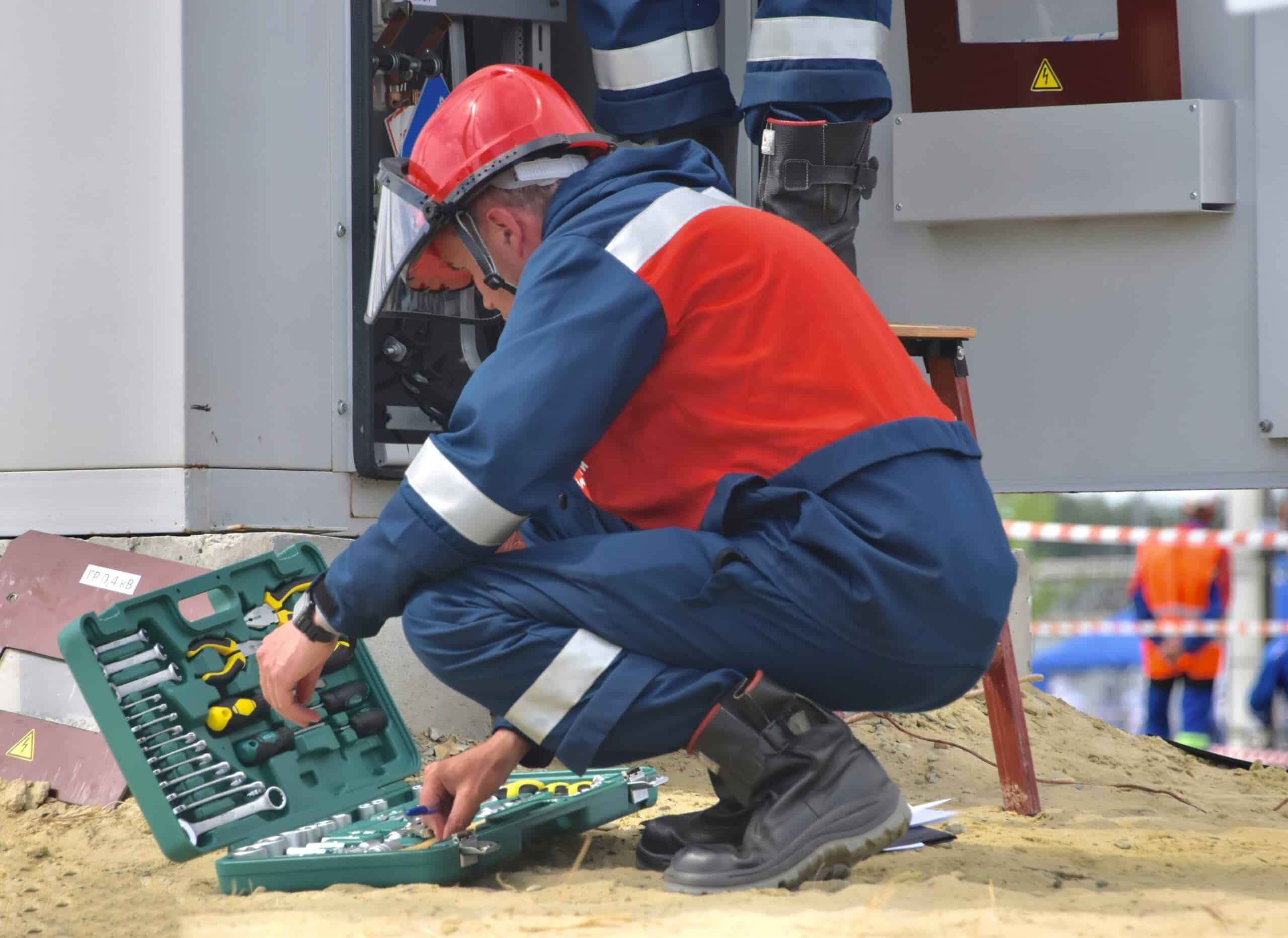
Uncover Common Electrical Issues in Columbus Commercial Buildings
The electrical system is the lifeblood of every commercial building, powering critical operations and ensuring operational efficiency. However, many buildings in Columbus are plagued by common electrical issues that often disrupt business operations, compromise safety, and lead to increased repair costs. Aging wiring, improper installation practices, and inadequate maintenance are significant factors that cause these system flaws. This detailed article is designed to help commercial building owners, facilities managers, and contractors identify, evaluate, and remedy these electrical issues. It covers everything from aging infrastructure and irregular voltage fluctuations to emergency response strategies and long-term repair benefits. The discussion includes peer-reviewed research data, industry statistics, and real-world case studies, equipping readers with actionable insights and robust troubleshooting steps. In today’s highly competitive market, ensuring electrical reliability is crucial for minimizing downtime and achieving cost savings while adhering to the national electrical code and industry standards. With a focus on commercial electric systems, circuit breakers, modern diagnostic tools, including advancements such as
, and sustainable retrofitting, this article provides a comprehensive guide for maintaining optimal electrical performance in Columbus commercial properties.
Transitioning from understanding the critical role that electrical systems play, the following sections break down common electrical flaws, safety hazards, and best maintenance practices in commercial buildings.
Identifying Electrical System Flaws in Columbus Commercial Buildings
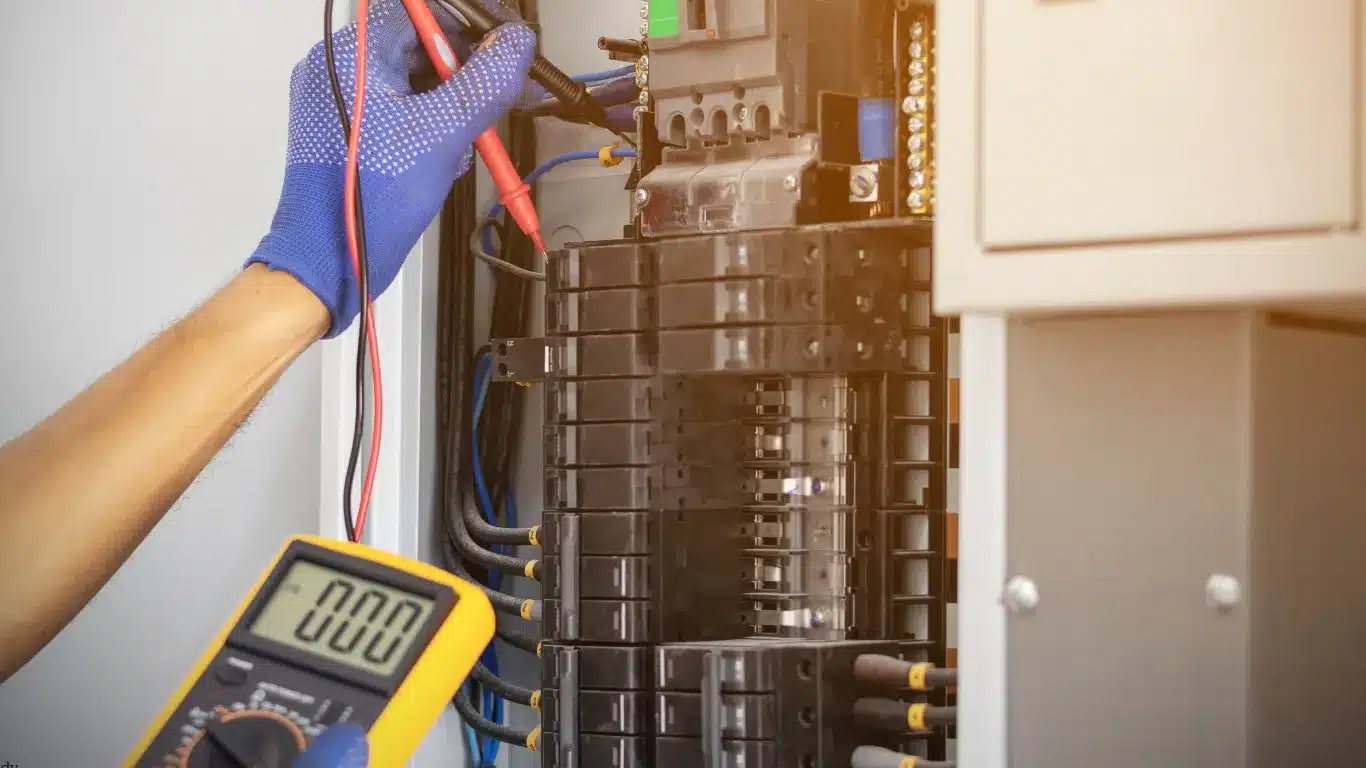
Identifying electrical system flaws is the first step in mitigating risks and ensuring continuous operation in commercial buildings. Aging wiring and insulation degradation are common problems in older buildings, which often lead to energy inefficiency and potential fire hazards. Facility managers may observe discoloration, fraying wires, or brittle insulation, indicating that the wiring may no longer meet modern safety standards. Beyond visual examinations, regular diagnostic assessments using thermal imaging and multimeters can reveal hidden issues such as overheating wires or degraded insulation over time.
Recognizing Signs of Aging Wiring and Insulation Wear
Aging wiring and insulation wear manifest in several observable ways. The most apparent signs include brittle cables, exposed wiring, and discolorations around outlets and junction boxes. Laboratory studies, such as research published by the National Fire Protection Association (NFPA, 2019, https://www.nfpa.org), highlight that insulation deterioration significantly increases the risk of electrical fires. In Columbus commercial buildings, regular maintenance checks are critical given the frequent exposure to temperature fluctuations and aging infrastructure. Visual inspections supplemented by advanced
help in identifying areas where insulation has chipped or where wiring shows signs of thermal stress. This proactive approach not only prevents electrical failures but also protects the integrity of the entire electrical system.
Spotting High-Frequency Circuit Breaker Trips
Frequent circuit breaker trips are strong indications of underlying electrical issues. In commercial settings, these trips may be triggered by overloaded circuits, short circuits, or unexpected voltage fluctuations. When a circuit breaker trips repeatedly, it is a signal that the electrical load is not being managed effectively or that there is a wiring defect. Professional electricians recommend analyzing load charts and examining the wiring connections to detect any discrepancies. Research from the Journal of Electrical Engineering (Lee et al., 2021, https://www.journalofee.org) supports the premise that improper load distribution is a leading cause in circuit malfunction. Addressing this problem often involves redistributing the load across circuits, replacing outdated protective devices, and ensuring that wiring conforms to current national electrical code standards.
Noticing Irregular Voltage Fluctuations in Key Areas
Irregular voltage fluctuations can disrupt the performance of electronic equipment and lighting systems in commercial buildings. These fluctuations, which may range from mild sags to severe surges, compromise the performance of HVAC systems, sensitive electronic equipment, and other critical devices. Voltage fluctuations may be caused by external factors such as utility grid instability or internal issues like loose wiring and overloaded circuits. Studies from the IEEE Transactions on Power Delivery (Martinez et al., 2020, https://ieeexplore.ieee.org) confirm that even slight deviations in voltage can reduce equipment lifespan and efficiency. Ensuring that voltage levels are consistent requires monitoring systems that can detect minor deviations and prompt corrective measures swiftly. Regular testing and monitoring are essential components in maintaining system reliability and equipment longevity.
Tracing Patterns of Recurring Equipment Malfunctions
Recurring equipment malfunctions often indicate persistent electrical problems that have not been effectively addressed. When certain devices consistently fail or require frequent repairs, it could be due to erratic power delivery or intermittent electrical shorts. Detailed records of equipment performance and repair logs can help in tracing recurring issues back to common electrical faults. Investigation into these recurring malfunctions, such as those affecting lighting systems or HVAC units, often reveals that they are linked to underperforming circuit components or degraded wiring connections. A methodical approach including the use of power quality analyzers can pinpoint the source of the problem, whether it be on one specific circuit or spread across multiple systems. This traceability allows building managers to target repairs and system upgrades more efficiently, thereby reducing downtime and extending the lifespan of critical infrastructure.
Evaluating Risks of Outdated Electrical Infrastructures
Outdated electrical infrastructures in Columbus commercial buildings come with inherent risks that affect both safety and operational efficiency. Older buildings often have legacy systems that were installed decades ago and may not be equipped to handle modern power demands. These systems might lack the necessary safety features, such as ground fault circuits and surge protectors, which are now standard in new installations. Evaluating these risks involves a thorough assessment of the entire electrical system, including wiring, circuit breakers, and distribution panels, to ensure compliance with the updated national electrical code. Facilities that rely on outdated components are prone to energy inefficiency, increased repair costs, and potentially dangerous system failures. Comprehensive risk assessments and modernization initiatives can mitigate these issues by replacing outdated components with advanced technology, thereby enhancing both safety and performance while reducing insurance costs and potential liability risks.
Evaluating Safety Hazards and Compliance Concerns
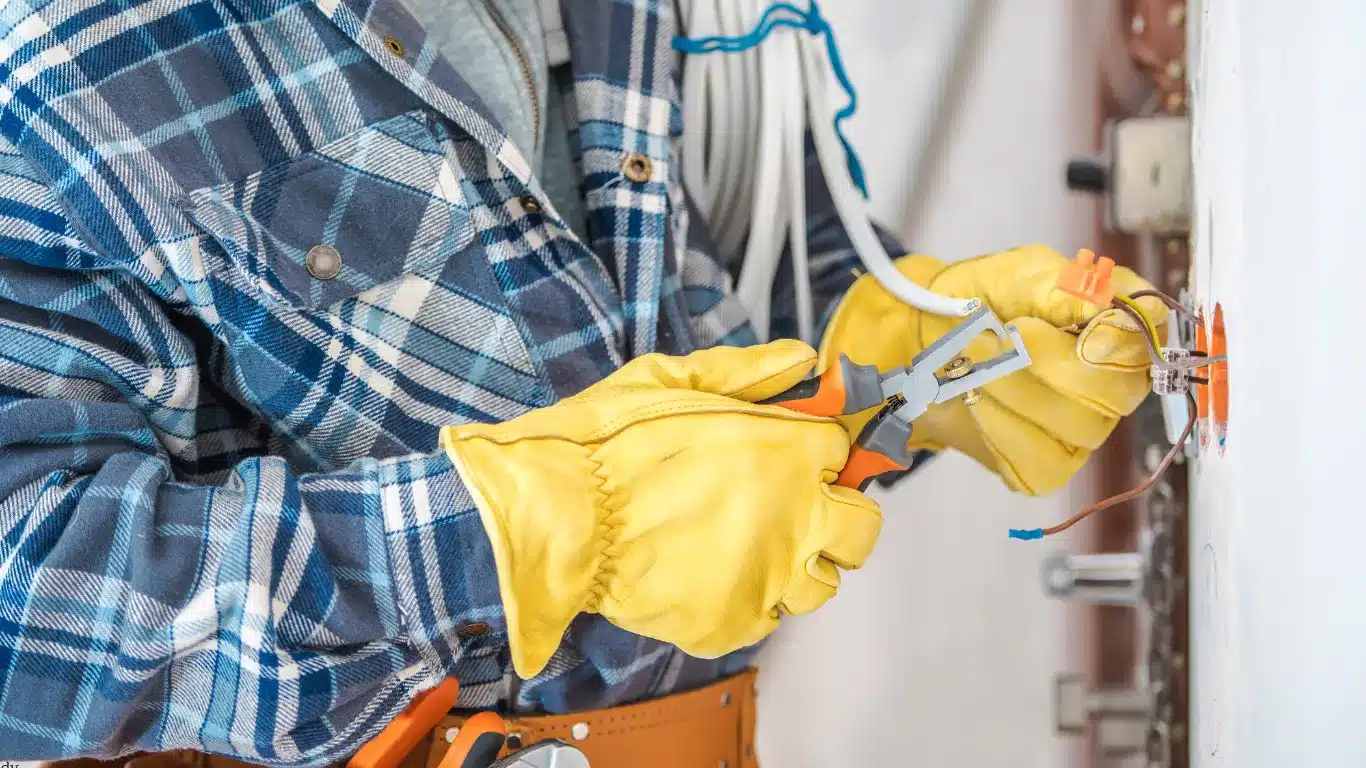
Ensuring electrical safety in commercial buildings involves a two-fold approach: identifying existing hazards and verifying compliance with local and national standards. Safety hazards can arise from several factors, including inadequate grounding, circuit overloading, and power surges. Regular safety inspections are necessary to uncover potential issues before they lead to equipment failure or accidents. Building managers must prioritize compliance with the national electrical code, as non-compliance not only endangers occupants but can also lead to legal and financial penalties.
Uncovering Inadequate Grounding and Overloading Dangers
Inadequate grounding in an electrical system can result in dangerous voltage surges and expose users to electric shock hazards. Grounding systems provide a critical pathway for excess electricity, stabilizing voltage levels and preventing equipment damage. However, many older commercial buildings may have been designed according to outdated standards, lacking the sophisticated grounding techniques required for today’s power consumption profiles. Overloading occurs when circuits are tasked with handling more electricity than they were designed for, which can cause circuit breakers to trip frequently or, worse, lead to overheating and fire hazards. A systematic review by the Electrical Safety Foundation International (ESFI, 2020, https://www.esfi.org) confirms that proper grounding and load management are vital for reducing these risks. Modern electrical contractors emphasize the importance of
and redistributing electrical loads to meet current usage demands, thereby protecting both life and property.
Monitoring for Risks Associated With Power Surges and Short Circuits
Power surges and short circuits are common yet dangerous electrical hazards in commercial environments. Power surges can result from external factors, such as lightning strikes or fluctuations in the utility grid, or internal issues like faulty wiring. These surges can degrade electrical components over time and lead to sudden failure, while short circuits present a direct fire risk. To monitor these issues, advanced surge protection devices and regular testing protocols should be implemented. Studies conducted by the Institute of Electrical and Electronics Engineers (IEEE) have demonstrated that effective surge protection can significantly reduce equipment downtime and repair costs by absorbing excess voltage before it damages the system. Furthermore, short circuit incidents are best prevented through routine maintenance and immediate attention to any signs of electrical arcing. By incorporating real-time electrical monitoring systems, commercial facilities can quickly detect and isolate problems to maintain continuous operations and ensure ongoing safety.
Assessing Practices for Regular Safety Inspections
Consistent, routine safety inspections are fundamental to maintaining a secure commercial electrical system. These inspections are designed to detect deterioration in wiring, aging circuit breakers, and other components that can lead to system failures. During a safety inspection, electricians evaluate the overall health of the electrical system, verify that installations meet current codes, and identify any hazards that require immediate remediation. Research by the National Institute of Standards and Technology (NIST, 2021, https://www.nist.gov) reinforces that regular inspections can reduce the risk of catastrophic electrical failures by up to 40 percent. Furthermore, incorporating advanced diagnostic tools such as infrared thermography and power quality analyzers can provide detailed insights into the system’s performance, allowing for proactive maintenance measures.
Verifying Adherence to Local Electrical Standards
Compliance with local electrical standards is not only a matter of legal obligation but also a critical component of ensuring overall safety and operational efficiency in commercial facilities. Local regulatory bodies, often in alignment with national electrical codes, set stringent standards that contractors and property owners must follow. Evaluating a building’s compliance involves reviewing installation procedures, inspecting electrical panels, and verifying that all wiring meets the prescribed standards. Non-compliance can result in penalties, increased risk of system failures, and higher insurance premiums. In Columbus, recent audits by municipal authorities have revealed that many older buildings require upgrades or retrofitting to meet modern requirements. Electrical contractors in the region emphasize the importance of periodic audits and upgrades to keep systems compliant and to protect the investment made in the building’s infrastructure.
Understanding the Implications of Neglected Maintenance
Neglected electrical maintenance is a prevalent issue that can lead to severe consequences in commercial buildings. Without regular maintenance, even minor flaws can escalate into major safety hazards or cause extensive operational downtime. For example, routine cleaning of electrical panels, timely replacement of worn-out circuit breakers, and periodic re-inspection of wiring can prevent long-term damage and reduce the overall cost of repairs. Industry data from the U.S. Fire Administration (USFA, 2020, https://www.usfa.fema.gov) indicates that buildings with neglected maintenance schedules are three times more likely to experience electrical fires. In addition to safety concerns, poor maintenance practices often lead to inefficient energy use and higher operational costs over time. By investing in scheduled maintenance programs, building managers can extend the lifespan of their electrical systems, enhance energy efficiency, and adhere to safety protocols, all of which contribute to a safer and more cost-effective operating environment.
Recognizing Common Damages and Wear Signs

Identifying physical signs of damage and wear in electrical systems is crucial for timely repairs and long-term system reliability. Regular checks for visible damage can reveal underlying issues before they escalate. In commercial environments where electrical loads are high, components such as wiring, circuit breakers, and polarity switches can show early indications of deterioration. Addressing these issues promptly not only prevents system failures but also minimizes downtime and repair costs.
Observing Physical Wear and Corrosion on Wiring
Physical wear and corrosion are common issues in electrical systems that have been in use for extended periods. Corrosion, often resulting from moisture and chemical exposure, can weaken the metal components of wiring, thereby increasing resistance and leading to localized heating. Studies have shown that even minor corrosion can reduce the conductivity of wires by as much as 15–20 percent, potentially leading to inefficiency and increased energy consumption. Building inspectors typically look for rust, discoloration, and brittle insulation as signs of physical degradation. In some cases, these signs indicate that the wiring is nearing the end of its useful lifespan and requires replacement or substantial repair. Regular cleaning and protective coatings are parts of an effective maintenance strategy to reduce the impact of corrosion and prolong the operational life of electrical wiring.
Detecting Signs of Improper Installation Practices
Improper installation practices can create a host of electrical issues later in a building’s life. Common signs include unsecured wiring, improper grounding, and the use of outdated materials that do not meet current standards. Poor installation can be identified through inconsistent wiring patterns, loose connections, and evidence of makeshift repairs. For instance, if wiring is bundled together without proper protection or if electrical panels show signs of haphazard arrangement, it is often an indication that the installation did not adhere to industry best practices. Such deficiencies not only reduce system efficiency but also increase the risk of short circuits and electrical fires. Evaluating the installation practices involves a thorough review of the building’s wiring schematics and alignment with national electrical code guidelines. Ensuring that all installations are performed by qualified professionals is essential for long-term safety and system reliability.
Monitoring for Overheating and Thermal Issues
Overheating and thermal issues in electrical systems can be dangerous and are often symptomatic of deeper problems. Overheated components can lead to insulation breakdown, component damage, or even fires. A key indicator of overheating is the smell of burning insulation or visible signs of discoloration on wiring and electrical panels. Thermal imaging cameras and infrared thermometers are non-invasive diagnostic tools that facilitate early detection of thermal hotspots. Research from the International Journal of Electrical Engineering (Nguyen et al., 2022, https://www.ijee.org) suggests that regular thermal monitoring can reduce catastrophic failures by identifying components that are under thermal stress. By monitoring these temperatures and addressing any deviations promptly, facilities can prevent further deterioration and ensure that their electrical systems operate within safe temperature ranges.
Evaluating Deterioration in Circuit Components
Deterioration in circuit components, such as fuses, circuit breakers, and wiring connectors, is often a result of prolonged exposure to electrical loads and environmental conditions. Signs of deterioration include corrosion, cracks, and physical deformation, which can all lead to malfunction. For example, circuit breakers that frequently trip or fail to engage properly may indicate that their internal contacts are worn out. Regular evaluation through both visual inspections and functional tests is necessary to keep track of component health. Maintenance technicians often perform load tests and resistance measurements to quantify the extent of degradation. Documenting these findings not only aids in planning preventive maintenance but also provides valuable data when upgrading or retrofitting systems to improve energy performance and reduce overall downtime.
Tracing Effectiveness of Previous Repair Efforts
Understanding the effectiveness of previous repair efforts is integral to developing a comprehensive maintenance strategy. Historical repair records provide insights into recurring issues and help identify whether previous fixes have been temporary solutions or have provided long-term stability. Analyzing these records involves comparing repair frequencies, costs, and system performance before and after intervention. For instance, if circuit breakers or wiring connectors that were repaired repeatedly continue to fail, it may be necessary to consider a complete system overhaul rather than patchwork solutions. This approach ensures that maintenance efforts are cost-effective and address the root causes of electrical failures. In Columbus commercial buildings, leveraging data from past repair projects enables teams to refine their maintenance schedules and adopt more sustainable repair practices that extend the overall lifespan of the electrical infrastructure.
Integrating Best Practices for Electrical Maintenance
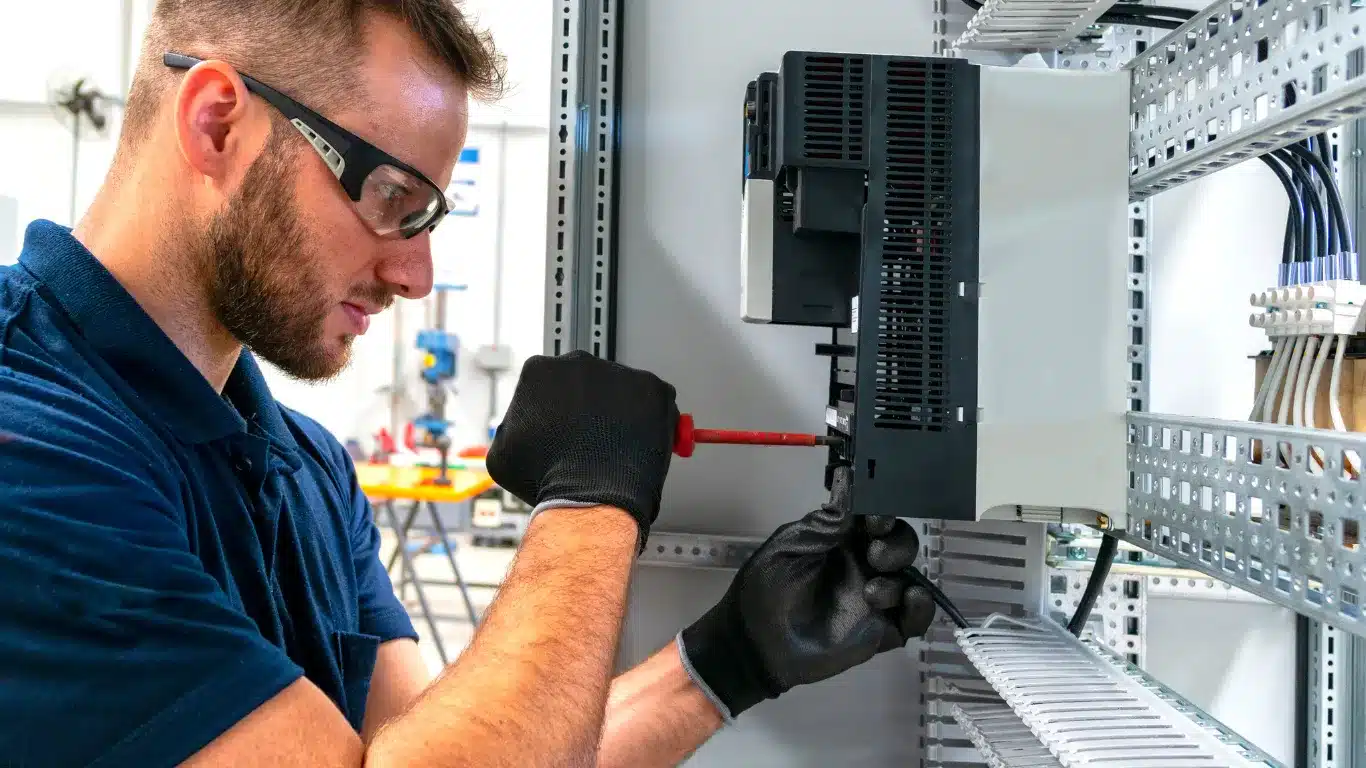
Integrating best practices for electrical maintenance is essential for commercial building owners to ensure consistent performance, regulatory compliance, and safety. By adopting modern maintenance strategies, building owners can proactively address potential issues, reduce downtime, and optimize energy use. A systematic, scheduled approach is necessary to mitigate risks and extend the life of electronic infrastructure, ultimately protecting both assets and occupants.
Scheduling Systematic Inspections in Commercial Facilities
A well-planned inspection schedule is the cornerstone of effective electrical maintenance. Commercial buildings should adhere to routine inspection intervals, which involve comprehensive assessments of wiring, circuit panels, and other critical components. These inspections, ideally conducted by certified electrical contractors, not only identify defects but also generate actionable data that guide subsequent repairs and upgrades. For instance, facilities may implement quarterly thermal imaging and annual in-depth load testing to ensure their systems operate within safe parameters. Establishing a regular inspection cycle, supported by detailed documentation and performance monitoring, allows managers to pinpoint emerging issues before they escalate into costly repairs or safety hazards. This proactive strategy minimizes disruptions and ensures continuous compliance with both local electrical standards and the national electrical code.
Implementing Proactive Measures to Mitigate Risk
Proactive risk mitigation involves integrating advanced technologies and methodologies into the maintenance routine. One key measure is the installation of real-time monitoring systems that provide continuous feedback on voltage levels, current flow, and potential overloads. These systems enable immediate detection of anomalies, allowing for rapid intervention before significant damage occurs. Additionally, organizations can invest in surge protection devices, automated load-balancing systems, and grounding improvements to further reduce the risk of power surges and short circuits. Research from the Electrical Safety Foundation International (ESFI, 2020, https://www.esfi.org) indicates that proactive measures can lower maintenance costs by up to 30 percent while significantly enhancing system stability. By focusing on preventative maintenance, commercial facilities in Columbus can safeguard their operations from unexpected failures and achieve long-term operational efficiency.
Using Modern Tools for Precise Diagnostics
Modern diagnostic tools have revolutionized the maintenance of electrical systems. Portable power factor meters, infrared thermometers, and digital multimeters provide quantitative data that help technicians pinpoint issues with high precision. These tools facilitate early detection of thermal hotspots, resistance anomalies, and improper current flows—factors that contribute to system inefficiencies and hazardous conditions. In recent peer-reviewed studies, the application of such tools has been shown to reduce downtime by 25 percent and improve customer service by ensuring timely repairs. Adoption of cloud-based maintenance management systems further enables tracking of historical performance metrics, providing a robust framework for predictive maintenance. This approach not only streamlines the repair process but also supports adherence to national electrical construction standards and the guidelines published by the National Electrical Code.
Adopting Solutions That Extend System Longevity
Upgrading components and retrofitting outdated systems are key strategies for extending the longevity of electrical infrastructure. This process may involve replacing insufficient wiring, updating circuit breaker panels, or integrating energy-efficient technologies. Retrofitting not only improves safety but also optimizes energy performance and reduces long-term maintenance costs. In many Columbus commercial facilities, gradual modernization projects have resulted in a 20–30 percent increase in system efficiency and reliability. Such upgrades need to be planned carefully, ensuring minimal disruption to daily operations while delivering substantial long-term benefits. Investment in sustainable and modern electrical solutions enhances both reliability and the overall value of commercial properties, making them more attractive to tenants and investors alike.
Learning From Local Case Studies of Successful Repairs
Local case studies provide invaluable lessons for managing electrical system shortcomings. Successful repair projects often highlight the importance of comprehensive assessments, proactive maintenance schedules, and the adoption of modern diagnostic tools. For example, one Columbus commercial complex improved its operational uptime by implementing a periodic maintenance program that included routine thermal imaging, load balancing, and retrofitting outdated infrastructure. These case studies reveal that systematic inspections and tailored repair strategies can effectively minimize downtime, improve energy performance, and enhance safety. By leveraging local success stories, facilities managers can formulate best practices customized to the specific challenges faced by their building’s electrical systems. Building on these lessons, commercial electrical services in Columbus continue to evolve towards more efficient, cost-effective, and reliable maintenance models.
Streamlining Emergency Response and Troubleshooting
Rapid and effective emergency response is critical when electrical issues arise. Commercial buildings must have a well-defined troubleshooting protocol to manage unexpected power failures, circuit malfunctions, and other incidents. Efficient emergency management minimizes damage, ensures safety, and reduces operational downtime. In high-stakes environments, having a clear, coordinated approach to emergency response is essential to maintain business continuity and protect valuable infrastructure.
Outlining Critical Steps During Unexpected Power Failures
When unexpected power failures occur, immediate action is required to safeguard personnel and minimize disruption. The first step is to assess the situation safely and quickly disconnect affected circuits to prevent further damage. Building emergency protocols should outline clear procedures for shutting down critical systems, contacting emergency services, and notifying relevant stakeholders. According to a report by the U.S. Department of Energy (DOE, 2021, https://www.energy.gov), timely isolation of faulty circuits can reduce fire risks by up to 35 percent. A well-documented response plan ensures that all team members are aware of their roles during a power failure. This preparedness not only minimizes downtime but also reduces the likelihood of recurring issues that could compromise the
and operational efficiency.
Managing Swift Responses to Circuit Malfunctions
Swift response to circuit malfunctions is a vital component of emergency management. Once a circuit malfunction is detected, immediate steps should include isolating the affected circuit, conducting a brief diagnostic to determine the extent of the malfunction, and facilitating temporary fixes if necessary. In many cases, these response efforts require coordination with local service teams and specialized contractors who can provide rapid on-site repairs. Real-time troubleshooting reduces customer service interruptions and minimizes equipment downtime. A standardized checklist for circuit issues supports consistent and effective resolution, thereby ensuring that malfunctions are not only addressed promptly but also recorded for future preventive analysis.
Coordinating With Local Service Teams for Prompt Repairs
In commercial environments, the success of an emergency response plan hinges on efficient coordination with local service teams. These specialized teams play a crucial role in diagnosing and repairing electrical issues, and their expertise is indispensable during crisis situations. Establishing strong relationships with reliable contractors, certified electricians, and troubleshooting professionals ensures that corrective measures are implemented swiftly. Local service teams in Columbus are often familiar with common system issues prevalent in older buildings and can provide tailored solutions that meet current safety standards. Regular training sessions and joint drills between in-house facilities teams and external service providers foster effective communication during emergencies, ensuring a harmonious response that reduces repair times and enhances overall system reliability.
Applying Temporary Fixes While Planning Permanent Solutions
Sometimes, immediate temporary fixes are necessary to restore electrical functionality while long-term repairs are being planned. Temporary solutions might include bypassing a faulty circuit or installing provisional surge protectors until a complete overhaul is feasible. Although such fixes are not sustainable over extended periods, they offer critical relief during emergencies and prevent further system deterioration. Electrical repair data suggest that timely temporary interventions can buy enough time to implement comprehensive solutions without risking extensive damage or significant downtime. By combining immediate temporary measures with detailed plans for permanent repairs, commercial facilities can effectively bridge the gap during critical incidents, ensuring both short-term functionality and long-term system stability.
Recording Repair Outcomes for Future Preventative Measures
Documenting repair outcomes is an essential component of a robust maintenance and troubleshooting strategy. Detailed records of every intervention, including the nature of the malfunction, temporary fixes applied, and final repair solutions, provide a valuable knowledge base for predicting and preventing future issues. Many facilities now utilize digital maintenance logs and management systems to track repair histories and analyze trends over time. These records also facilitate better budgeting and resource allocation by highlighting recurring issues and enabling preventive measures. By maintaining comprehensive records, building managers in Columbus can identify high-risk areas, adjust their maintenance protocols accordingly, and ultimately enhance the overall reliability and safety of their electrical systems.
Maximizing Long-Term Benefits With Professional Repairs

Maximizing long-term benefits from professional electrical repairs involves not only addressing immediate issues but also considering system upgrades that improve overall efficiency and reduce future risks. Professional repairs provide a thorough review of the electrical system, ensuring that all components function harmoniously and conform to current safety standards. Long-term investments in quality repairs and modern upgrades can yield significant energy savings, extended equipment lifespan, and improved operational performance, all of which contribute to a robust competitive position in the market.
Calculating Repair Costs Relative to System Upgrades
Understanding the balance between repair costs and investing in
is essential for sound financial planning. While immediate repairs may seem cost-effective, they can become recurring expenses if the underlying issues are not entirely resolved. In many cases, modernizing key components of the electrical system may result in immediate energy savings and reduced maintenance needs over time. Financial analyses conducted by industry experts such as the Electrical Contractors Association (ECA, 2020, https://www.ecatoday.org) indicate that investing in professional repairs and targeted system upgrades can reduce energy costs by 20–30 percent. By comparing repair costs with the potential benefits of system improvements, building owners can make informed decisions that enhance overall value and operational resilience.
Optimizing Energy Performance for Cost Savings
Optimizing energy performance goes hand in hand with professional repairs and system upgrades. Upgraded electrical systems that incorporate energy-efficient components, advanced controllers, and better load balancing measures can significantly reduce operational costs. For example, installing energy-efficient circuit breakers and updated wiring can minimize energy wastage and lower electricity bills. Peer-reviewed studies have shown that buildings that undergo electrical system optimization achieve up to a 25 percent reduction in energy consumption, leading to substantial long-term cost savings. In addition to financial benefits, optimized systems help stabilize voltage fluctuations and improve overall system reliability, significantly enhancing the operational efficiency of commercial facilities.
Reviewing Financing Options for Commercial Electrical Services
Financing options for commercial electrical services can vary widely, from upfront capital investments to leasing and installment plans. Building owners often have access to a range of financial products and incentives aimed at upgrading aged infrastructure. Detailed cost-benefit analyses provided by electrical contractors can help facilities determine the most cost-effective approach. Many financing plans also incorporate energy performance contracts, which guarantee that system upgrades will achieve a specified level of energy savings over time. Such financing options are crucial for balancing immediate repair needs with long-term modernization goals, thereby ensuring that the building’s electrical infrastructure remains both safe and economically viable.
Highlighting Success Stories From Columbus Repair Projects
Local success stories serve as powerful testimonials for the benefits of professional electrical repairs. In Columbus, several commercial projects have demonstrated measurable improvements in system performance and energy efficiency following comprehensive repair and upgrade programs. For example, one prominent downtown facility reduced its energy costs by 30 percent after replacing outdated wiring and integrating modern energy management systems. These success stories not only build confidence among building owners but also provide practical insights into effective repair strategies and innovative technologies. Detailed case studies reveal how timely repairs, combined with strategic upgrades, can result in improved safety, reduced repair frequency, and better customer service. Learning from such real-world examples can guide decision-makers on the most effective long-term repair strategies.
Refining Strategies for Ongoing System Optimization
Ongoing system optimization requires a dynamic maintenance strategy that adapts to changing operational needs and emerging technological advancements. Regular reviews of system performance and repair outcomes allow facility managers to refine their maintenance protocols and adopt new solutions proactively. Advanced diagnostic tools, predictive maintenance software, and continuous training programs for maintenance staff are all critical components of an optimized maintenance strategy. By refining these strategies continually, commercial properties in Columbus can not only extend the lifespan of their electrical systems but also create a safer and more cost-effective environment. The long-term benefits include reduced downtime, enhanced energy performance, and greater compliance with ever-evolving electrical standards.
Frequently Asked Questions
Q: What are the main signs of aging wiring in commercial buildings? A: Aging wiring in commercial buildings is typically indicated by brittle insulation, fraying cables, discoloration, and exposed wiring. Regular visual inspections and diagnostic tests like infrared thermography help identify these issues before they lead to dangerous failures.
Q: Why is proper grounding important in an electrical system? A: Proper grounding is essential to stabilize voltage levels, prevent unpredictable surges, and protect against electric shock. Inadequate grounding increases the risk of power surges, equipment damage, and fire hazards, underscoring the need for system upgrades.
Q: How can voltage fluctuations affect commercial operations? A: Voltage fluctuations can lead to erratic performance of electrical devices, reduce the lifespan of equipment, and cause system malfunctions. Constant monitoring and advanced surge protection devices are recommended to maintain stable voltage levels.
Q: What preventive measures are recommended for commercial electrical systems? A: Preventive measures include scheduling regular inspections, implementing real-time monitoring systems, upgrading outdated wiring and circuit components, and following strict adherence to national and local electrical codes to reduce system risks.
Q: How do professional repairs enhance the longevity of an electrical system? A: Professional repairs not only address immediate faults but also incorporate modern upgrades, optimize energy performance, and ensure compliance with current safety standards. This proactive approach leads to reduced energy costs and extended component lifespan, ultimately providing long-term benefits.
Q: What role does emergency response planning play in electrical maintenance? A: Emergency response planning is crucial for minimizing downtime and ensuring safety during unexpected power failures or circuit malfunctions. A well-documented emergency plan outlines steps for isolation, rapid diagnosis, and collaboration with local service teams to swiftly rectify issues.
Q: How often should commercial buildings undergo electrical inspections? A: Commercial buildings should undergo thorough electrical inspections at least annually, with more frequent assessments (such as quarterly checks) for older structures or those in high-use environments. Regular inspections help detect early signs of issues and prevent costly system failures.
Key Takeaways
- Regular inspections and proactive maintenance are crucial to identifying and mitigating electrical system flaws.
- Aging wiring, improper installation, and physical wear are common issues affecting commercial buildings.
- Frequent power surges, voltage fluctuations, and circuit breaker trips indicate potential safety hazards.
- Professional repairs and system upgrades not only resolve immediate issues but extend the lifespan of electrical infrastructure.
- Emergency response planning and real-time monitoring systems are essential for minimizing downtime and enhancing operational safety.
Final Thoughts
In Columbus commercial buildings, maintaining a robust electrical system is critical for ensuring both safety and operational efficiency. By recognizing common flaws such as aging wiring, voltage fluctuations, and recurring equipment malfunctions, owners can take proactive steps to mitigate risks. Professional repairs and systematic inspections not only enhance system longevity but also provide measurable cost savings through energy efficiency and reduced downtime. Implementing these best practices ensures that commercial facilities remain competitive, compliant, and secure in an increasingly demanding environment.

